THE BEAUTY OF DANGER AS STIMULUS – NAN GONZÁLEZ IN PINTA CONCEPT
With the curatorship of Félix Suazo, Pinta Miami 2021 becomes a scenario for immersive and thought provoking installations. The aim of Pinta’s section Special Projects is to accentuate the individuality and artistry of contemporary artists who, through their works and installations, bring to life the concerns and possibilities of the near future.
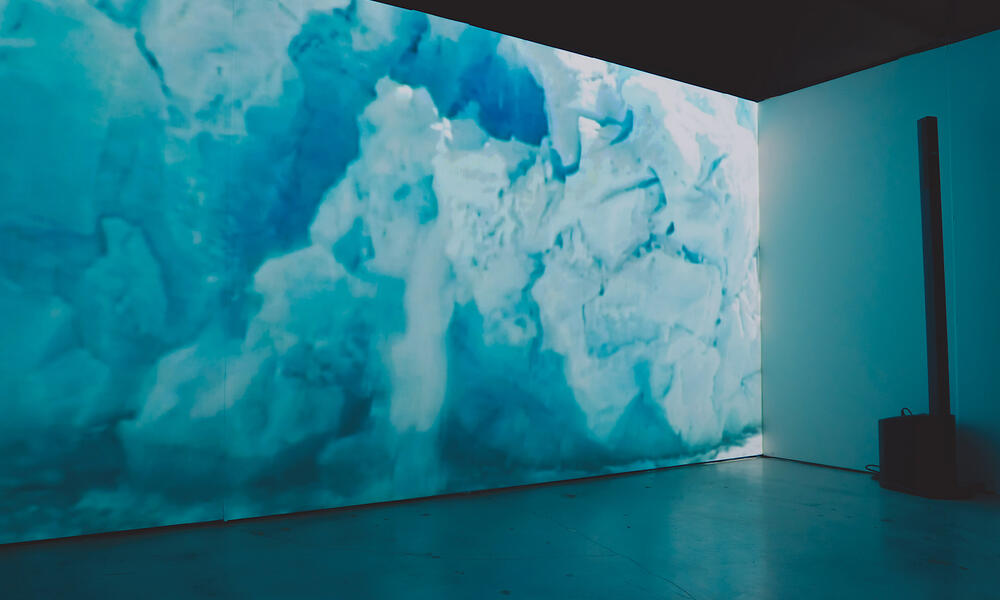
Venezuelan artist Nan González presents a video installation that is both monumental and sheltered. The pieces in it, Alma de Glaciar (Glacier Soul) and Titanes de Hielo (Ice Titans) were designed as an immersive experience for visitors and aim to address the interconnectedness of nature’s elements and the butterfly effect of human endeavor. Using water as a leitmotif, González installation and Suazo’s curatorship raise awareness about global warming and the loss of biodiversity; two of the most pressing matters that Miami faces.
Oscillating between the visual comfort of beautiful blue hues and the deep awkwardness of the creaking and crashing sounds of breaking glaciers, the installation demands a response from its audience. González is quite explicit in the work’s alarming tone; by bringing the disintegration of ice caps from the deep South to tropical Miami, González sets a powerful ultimatum. And, quite frankly, anyone who stands before the installation without feeling the urgency to do better for the environment, is being intentionally oblivious. González seems to be calling out on these attitudes, alarming the public on the importance of “now” when we hear “now is the time to act”. With Miami sitting practically on Sea Level, Alma de Glaciar and Titanes de Hielo threaten the area’s survival, in this way raising awareness on the imminent dangers of global warming.
Poetically, the works crystalize a concern that goes beyond nature and speaks of a state of being. The constant breaking of ice implies and motivates a boost in dynamics and transformations. In this way, the installation is paradoxically and necessarily alarming and hopeful at the same time. The symbolism in these videos and the beauty of danger carry a stimulating effect that both exhilarates and inspires: the impacting images of dismembering ice attract a sort of dialogue that is physical and collective. With an audience that is engulfed by the possibility of change and the hypnotic quality of the sounds and images, the installation sets itself into a diaphanous state where aesthetics transcend individual sensory perception to invade the space between. In this abstract plain where time and space dissolve, an amorphous but very evident urging is pronounced: no real transformation can be achieved without the joint effort of populations.
Nan González studied art, photography and film in Caracas, London and Cannes between 1974 and 1980. Throughout her career she has been interested in performance, video art and installation, media she has used to reflect on the body, nature and time. Between 1979 and 1986 she developed a series of performances and installations in creative partnership with Jennifer Hackshaw under the pseudonym Yeni and Nan. Among her major solo exhibitions are El vuelo del cristal and El proceso de un pensamiento, Museo de Bellas Artes, Caracas (1991), Titanes de Hielo, Museo de Bellas Artes, Caracas (2005), Guardianes, Centro de Arte los Galpones, Caracas (2014) and Tramas del tiempo, Sala TAC, Caracas (2019).
Her works were included in important group exhibitions in Argentina, Brazil, France, Peru, the United States and Venezuela, among which stand out: Biennial of Young Artists, Lieu Grand Palais, Paris (1982); III National Salon of Young Artists, Museum of Contemporary Art of Caracas Sofía Imber, Caracas (1985); Biennial of Peru, Museum of the Republic, Lima (1987); Biennial of Young Artists, Museum of Modern Art, Paris; Terre-Terre, Baie Saint Paul Art Center, Canada (1992); Ecoperfomía and Video Habitats, Museo de Bellas Artes, Caracas (1997 and 2000); Vidéo Femmes, Iturralde Gallery, Los Angeles, (2002); I Biennial of the End of the World, Ushuaia (2007).
Related Topics
May interest you

Miami’s leading art fair for Latin American art opens its doors to the public at a new location. Promising exhibitions, emerging and established talents, and exciting announcements will feature in Pinta 2021. Tickets are available here

Miami’s leading art fair for Latin American art opens its doors to the public at a new location. Promising exhibitions, emerging and established talents, and exciting announcements will feature in Pinta 2021. Tickets are available here
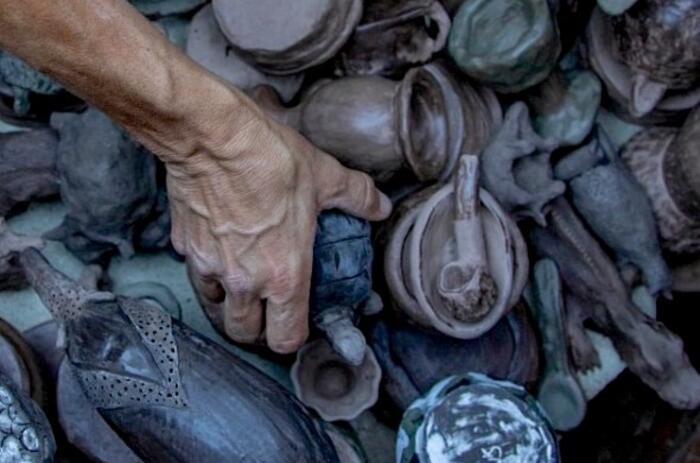
Designed as an immersive dining experiment in Miami, A Fire Offering is curated by Sofia Bastidas. This installation and performative object art is part of the Collective62’s interest in creating a collective space that foments creative reflection among its residents.
A FIRE OFFERING BY DESIRÉE DE RIDDER, ARTIST IN RESIDENCE AT COLLECTIVE62
Designed as an immersive dining experiment in Miami, A Fire Offering is curated by Sofia Bastidas. This installation and performative object art is part of the Collective62’s interest in creating a collective space that foments creative reflection among its residents.

Recently, Richard Garet, a multimedia artist based primarily in New York City, opened a solo exhibition titled “Frame Compositions” with 1stDibs NFT marketplace. The eponymous show exhibits 29 vibrant NFT works and explores the relationship between color, light, surface and form. Garet’s practice encompasses sound installations, performance, computer applications and other mediums. Adhering to strict parameters, he creates compositions by carefully selecting high-definition 1080x1080-pixel square frames one-by-one and then collating 60 per second using computer applications. Because each work contains 1800 frames squeezed into a 30 second time period, the eye can no longer identify individual frames, thus, creating moving images.
RICHARD GARET: FRAME COMPOSITIONS
Recently, Richard Garet, a multimedia artist based primarily in New York City, opened a solo exhibition titled “Frame Compositions” with 1stDibs NFT marketplace. The eponymous show exhibits 29 vibrant NFT works and explores the relationship between color, light, surface and form. Garet’s practice encompasses sound installations, performance, computer applications and other mediums. Adhering to strict parameters, he creates compositions by carefully selecting high-definition 1080x1080-pixel square frames one-by-one and then collating 60 per second using computer applications. Because each work contains 1800 frames squeezed into a 30 second time period, the eye can no longer identify individual frames, thus, creating moving images.

With the curatorship of Oscar Roldán and Luis Fumero, the Solo Projects section acquires a stronger protagonism this year. The section is dedicated to gallery exhibitions that consist of works by a selected artist; the perfect opportunity for visitors to relate more profoundly and personally with the artists.
PINTA SOLO PROJECTS - A NEW EMPHASIS
With the curatorship of Oscar Roldán and Luis Fumero, the Solo Projects section acquires a stronger protagonism this year. The section is dedicated to gallery exhibitions that consist of works by a selected artist; the perfect opportunity for visitors to relate more profoundly and personally with the artists.
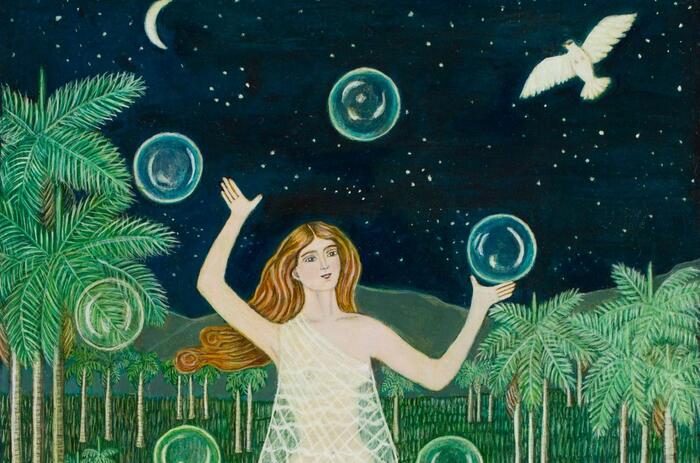
Celebrating the occasion of her 90th birthday, the exhibition will be on display until February 13, 2022. The aim is to celebrate the life and work of Cuban-born, Miami-based artist Margarita Cano.
NSU ART MUSEUM FORT LAUDERDALE EXHIBITS WORKS BY MARGARITA CANO
Celebrating the occasion of her 90th birthday, the exhibition will be on display until February 13, 2022. The aim is to celebrate the life and work of Cuban-born, Miami-based artist Margarita Cano.
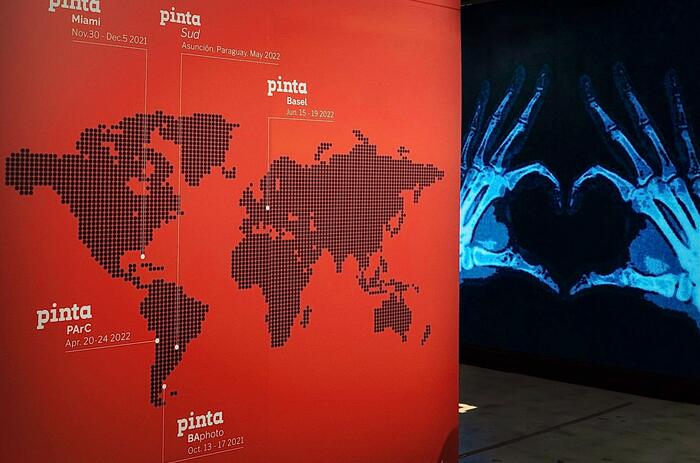
Pinta Miami reaches the end of 2021 and celebrates great sales and a successful blend format. Pinta Concept marked the 15th year for Pinta and, once again, brought together artists, galleries, curators, collectors and overall art lovers to showcase the best of Latin American art. Almost 300 artworks were exhibited, which represented 11 countries and both emerging and established talents.
PINTA CONCLUDES 2021 ON A HIGH NOTE AND WITH GREAT EXPECTATIONS
Pinta Miami reaches the end of 2021 and celebrates great sales and a successful blend format. Pinta Concept marked the 15th year for Pinta and, once again, brought together artists, galleries, curators, collectors and overall art lovers to showcase the best of Latin American art. Almost 300 artworks were exhibited, which represented 11 countries and both emerging and established talents.

The exhibition with selected works from the Cisneros Fontanals Art Foundation Collection (CIFO) reflects on both the multidisciplinary practices of Latin American contemporary art and on its diversity as a conceptual frame that is inclusive of a carried universe of voices. It comprises 31 established, mid-career, and emerging artists from Argentina, Brazil, Colombia, Cuba, Ecuador, Guatemala, Mexico, Peru, Uruguay, and Venezuela, and features works of art in multiple media, including painting, sculpture, drawing, photography, video, as well as large-scale multimedia installations. Having debuted at the Cuenca Biennial in 2018, this is the first time this exhibition is presented at an arts institution in the United States.
CIFO COLLECTION EXHIBITS “PLURAL DOMAINS” IN FLORIDA, US.
The exhibition with selected works from the Cisneros Fontanals Art Foundation Collection (CIFO) reflects on both the multidisciplinary practices of Latin American contemporary art and on its diversity as a conceptual frame that is inclusive of a carried universe of voices. It comprises 31 established, mid-career, and emerging artists from Argentina, Brazil, Colombia, Cuba, Ecuador, Guatemala, Mexico, Peru, Uruguay, and Venezuela, and features works of art in multiple media, including painting, sculpture, drawing, photography, video, as well as large-scale multimedia installations. Having debuted at the Cuenca Biennial in 2018, this is the first time this exhibition is presented at an arts institution in the United States.
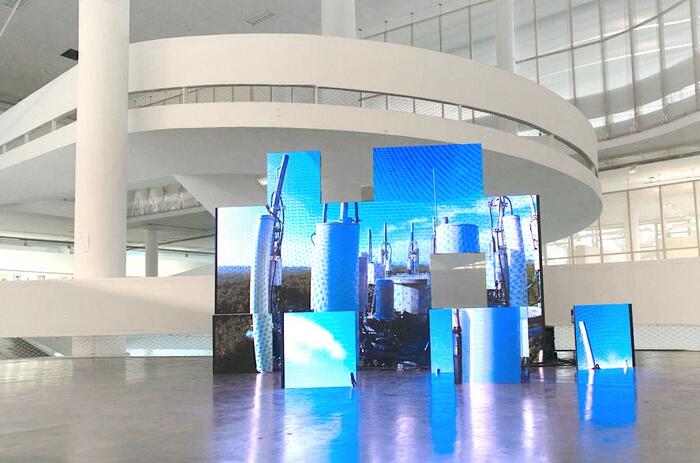
One of the key works of the 34th São Paulo Biennial literally anchors the robust and uncomfortable presence between the interstitial areas of this modernist building, so questioned today. However, its meanings go beyond the perimeters of the construction and extend to, for example, some of the civic sculptures that populate public places throughout Brazil and that are also located in the surroundings.
SILENT RISINGS - 34th BIENNIAL OF SÃO PAULO, JURACI DÓREA AND GIORGIO MORANDI
One of the key works of the 34th São Paulo Biennial literally anchors the robust and uncomfortable presence between the interstitial areas of this modernist building, so questioned today. However, its meanings go beyond the perimeters of the construction and extend to, for example, some of the civic sculptures that populate public places throughout Brazil and that are also located in the surroundings.
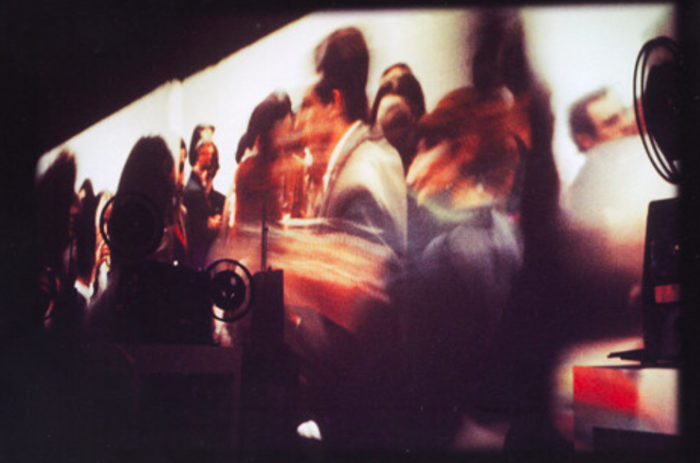
The exhibition includes this piece by Argentine artist Minujín which exposes a meta-narrative of the art world and other spheres, their different agents and interrelations.
MoMA’S COLLECTION GALLERY EXHIBITS MARTA MINUJÍN’S “MINUCODE”
The exhibition includes this piece by Argentine artist Minujín which exposes a meta-narrative of the art world and other spheres, their different agents and interrelations.
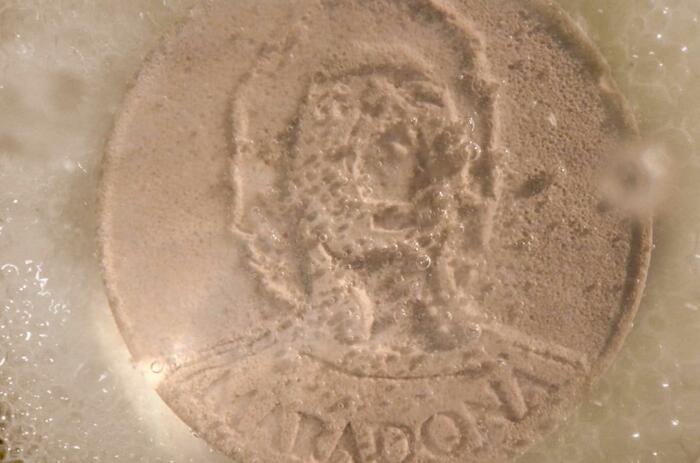
CLAUDIO CORREA: OVERCOMING A RESISTANCE
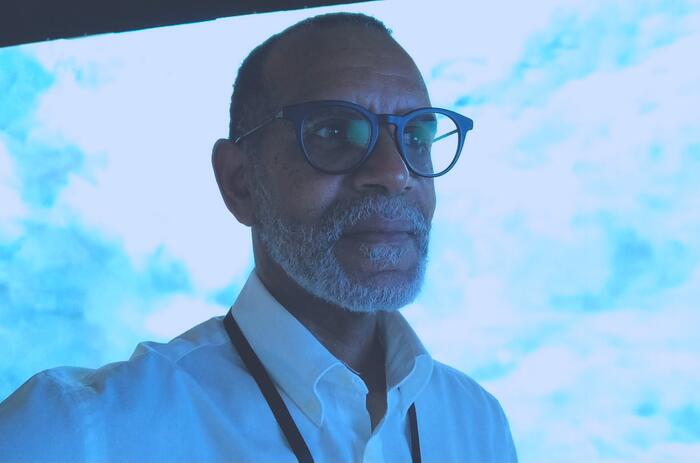
Arte al Día presents renowned curator Félix Suazo as a writer and editorial collaborator.
FÉLIX SUAZO – NEW COLLABORATION WITH ARTE AL DÍA
Arte al Día presents renowned curator Félix Suazo as a writer and editorial collaborator.
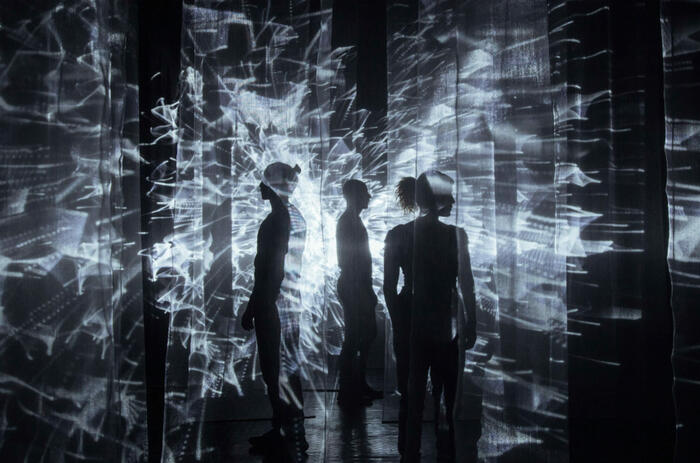
A few decades ago, the art utopia consisted of incorporating the viewer into the work, either physically or sensorially. Frank Popper called these practices with the term "participation art".
FROM PARTICIPATION TO IMMERSION
A few decades ago, the art utopia consisted of incorporating the viewer into the work, either physically or sensorially. Frank Popper called these practices with the term "participation art".
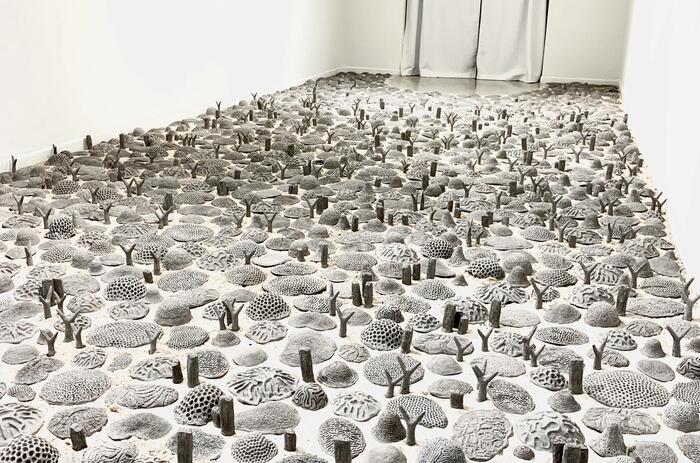
Review about the exhibition Into the Great Dying: (The Steps We Take), on view until June 2022
CLOSE ENCOUNTERS: ART AS A SOCIAL EXPERIMENT - BEATRIZ CHACHAMOVITS IN ART AND CULTURE CENTER, HOLLYWOOD, FLORIDA
Review about the exhibition Into the Great Dying: (The Steps We Take), on view until June 2022

The New York based photography foundation Penumbra exhibits OCÉANOS by Roberto Huarcaya (Lima, Perú, 1959) until July 22nd. The show presents the first-ever exhibition of this Peruvian artist’ large-scale photograms of the Pacific Ocean. In what could be described as a "photogrammatic performance," Huarcaya immerses himself into the waters of the sea to record its virulent nature and traces of contamination.
PLASTIC PRINTS IN ‘OCÉANOS’ – PENUMBRA FOUNDATION
The New York based photography foundation Penumbra exhibits OCÉANOS by Roberto Huarcaya (Lima, Perú, 1959) until July 22nd. The show presents the first-ever exhibition of this Peruvian artist’ large-scale photograms of the Pacific Ocean. In what could be described as a "photogrammatic performance," Huarcaya immerses himself into the waters of the sea to record its virulent nature and traces of contamination.

Miami’s leading art fair for Latin American art opens its doors to the public at a new location. Promising exhibitions, emerging and established talents, and exciting announcements will feature in Pinta 2021. Tickets are available here

Designed as an immersive dining experiment in Miami, A Fire Offering is curated by Sofia Bastidas. This installation and performative object art is part of the Collective62’s interest in creating a collective space that foments creative reflection among its residents.
A FIRE OFFERING BY DESIRÉE DE RIDDER, ARTIST IN RESIDENCE AT COLLECTIVE62
Designed as an immersive dining experiment in Miami, A Fire Offering is curated by Sofia Bastidas. This installation and performative object art is part of the Collective62’s interest in creating a collective space that foments creative reflection among its residents.

Recently, Richard Garet, a multimedia artist based primarily in New York City, opened a solo exhibition titled “Frame Compositions” with 1stDibs NFT marketplace. The eponymous show exhibits 29 vibrant NFT works and explores the relationship between color, light, surface and form. Garet’s practice encompasses sound installations, performance, computer applications and other mediums. Adhering to strict parameters, he creates compositions by carefully selecting high-definition 1080x1080-pixel square frames one-by-one and then collating 60 per second using computer applications. Because each work contains 1800 frames squeezed into a 30 second time period, the eye can no longer identify individual frames, thus, creating moving images.
RICHARD GARET: FRAME COMPOSITIONS
Recently, Richard Garet, a multimedia artist based primarily in New York City, opened a solo exhibition titled “Frame Compositions” with 1stDibs NFT marketplace. The eponymous show exhibits 29 vibrant NFT works and explores the relationship between color, light, surface and form. Garet’s practice encompasses sound installations, performance, computer applications and other mediums. Adhering to strict parameters, he creates compositions by carefully selecting high-definition 1080x1080-pixel square frames one-by-one and then collating 60 per second using computer applications. Because each work contains 1800 frames squeezed into a 30 second time period, the eye can no longer identify individual frames, thus, creating moving images.

With the curatorship of Oscar Roldán and Luis Fumero, the Solo Projects section acquires a stronger protagonism this year. The section is dedicated to gallery exhibitions that consist of works by a selected artist; the perfect opportunity for visitors to relate more profoundly and personally with the artists.
PINTA SOLO PROJECTS - A NEW EMPHASIS
With the curatorship of Oscar Roldán and Luis Fumero, the Solo Projects section acquires a stronger protagonism this year. The section is dedicated to gallery exhibitions that consist of works by a selected artist; the perfect opportunity for visitors to relate more profoundly and personally with the artists.

Celebrating the occasion of her 90th birthday, the exhibition will be on display until February 13, 2022. The aim is to celebrate the life and work of Cuban-born, Miami-based artist Margarita Cano.
NSU ART MUSEUM FORT LAUDERDALE EXHIBITS WORKS BY MARGARITA CANO
Celebrating the occasion of her 90th birthday, the exhibition will be on display until February 13, 2022. The aim is to celebrate the life and work of Cuban-born, Miami-based artist Margarita Cano.

Pinta Miami reaches the end of 2021 and celebrates great sales and a successful blend format. Pinta Concept marked the 15th year for Pinta and, once again, brought together artists, galleries, curators, collectors and overall art lovers to showcase the best of Latin American art. Almost 300 artworks were exhibited, which represented 11 countries and both emerging and established talents.
PINTA CONCLUDES 2021 ON A HIGH NOTE AND WITH GREAT EXPECTATIONS
Pinta Miami reaches the end of 2021 and celebrates great sales and a successful blend format. Pinta Concept marked the 15th year for Pinta and, once again, brought together artists, galleries, curators, collectors and overall art lovers to showcase the best of Latin American art. Almost 300 artworks were exhibited, which represented 11 countries and both emerging and established talents.

The exhibition with selected works from the Cisneros Fontanals Art Foundation Collection (CIFO) reflects on both the multidisciplinary practices of Latin American contemporary art and on its diversity as a conceptual frame that is inclusive of a carried universe of voices. It comprises 31 established, mid-career, and emerging artists from Argentina, Brazil, Colombia, Cuba, Ecuador, Guatemala, Mexico, Peru, Uruguay, and Venezuela, and features works of art in multiple media, including painting, sculpture, drawing, photography, video, as well as large-scale multimedia installations. Having debuted at the Cuenca Biennial in 2018, this is the first time this exhibition is presented at an arts institution in the United States.
CIFO COLLECTION EXHIBITS “PLURAL DOMAINS” IN FLORIDA, US.
The exhibition with selected works from the Cisneros Fontanals Art Foundation Collection (CIFO) reflects on both the multidisciplinary practices of Latin American contemporary art and on its diversity as a conceptual frame that is inclusive of a carried universe of voices. It comprises 31 established, mid-career, and emerging artists from Argentina, Brazil, Colombia, Cuba, Ecuador, Guatemala, Mexico, Peru, Uruguay, and Venezuela, and features works of art in multiple media, including painting, sculpture, drawing, photography, video, as well as large-scale multimedia installations. Having debuted at the Cuenca Biennial in 2018, this is the first time this exhibition is presented at an arts institution in the United States.

One of the key works of the 34th São Paulo Biennial literally anchors the robust and uncomfortable presence between the interstitial areas of this modernist building, so questioned today. However, its meanings go beyond the perimeters of the construction and extend to, for example, some of the civic sculptures that populate public places throughout Brazil and that are also located in the surroundings.
SILENT RISINGS - 34th BIENNIAL OF SÃO PAULO, JURACI DÓREA AND GIORGIO MORANDI
One of the key works of the 34th São Paulo Biennial literally anchors the robust and uncomfortable presence between the interstitial areas of this modernist building, so questioned today. However, its meanings go beyond the perimeters of the construction and extend to, for example, some of the civic sculptures that populate public places throughout Brazil and that are also located in the surroundings.

The exhibition includes this piece by Argentine artist Minujín which exposes a meta-narrative of the art world and other spheres, their different agents and interrelations.
MoMA’S COLLECTION GALLERY EXHIBITS MARTA MINUJÍN’S “MINUCODE”
The exhibition includes this piece by Argentine artist Minujín which exposes a meta-narrative of the art world and other spheres, their different agents and interrelations.

CLAUDIO CORREA: OVERCOMING A RESISTANCE

Arte al Día presents renowned curator Félix Suazo as a writer and editorial collaborator.
FÉLIX SUAZO – NEW COLLABORATION WITH ARTE AL DÍA
Arte al Día presents renowned curator Félix Suazo as a writer and editorial collaborator.

A few decades ago, the art utopia consisted of incorporating the viewer into the work, either physically or sensorially. Frank Popper called these practices with the term "participation art".
FROM PARTICIPATION TO IMMERSION
A few decades ago, the art utopia consisted of incorporating the viewer into the work, either physically or sensorially. Frank Popper called these practices with the term "participation art".

Review about the exhibition Into the Great Dying: (The Steps We Take), on view until June 2022
CLOSE ENCOUNTERS: ART AS A SOCIAL EXPERIMENT - BEATRIZ CHACHAMOVITS IN ART AND CULTURE CENTER, HOLLYWOOD, FLORIDA
Review about the exhibition Into the Great Dying: (The Steps We Take), on view until June 2022

The New York based photography foundation Penumbra exhibits OCÉANOS by Roberto Huarcaya (Lima, Perú, 1959) until July 22nd. The show presents the first-ever exhibition of this Peruvian artist’ large-scale photograms of the Pacific Ocean. In what could be described as a "photogrammatic performance," Huarcaya immerses himself into the waters of the sea to record its virulent nature and traces of contamination.
PLASTIC PRINTS IN ‘OCÉANOS’ – PENUMBRA FOUNDATION
The New York based photography foundation Penumbra exhibits OCÉANOS by Roberto Huarcaya (Lima, Perú, 1959) until July 22nd. The show presents the first-ever exhibition of this Peruvian artist’ large-scale photograms of the Pacific Ocean. In what could be described as a "photogrammatic performance," Huarcaya immerses himself into the waters of the sea to record its virulent nature and traces of contamination.

Miami’s leading art fair for Latin American art opens its doors to the public at a new location. Promising exhibitions, emerging and established talents, and exciting announcements will feature in Pinta 2021. Tickets are available here

Designed as an immersive dining experiment in Miami, A Fire Offering is curated by Sofia Bastidas. This installation and performative object art is part of the Collective62’s interest in creating a collective space that foments creative reflection among its residents.
A FIRE OFFERING BY DESIRÉE DE RIDDER, ARTIST IN RESIDENCE AT COLLECTIVE62
Designed as an immersive dining experiment in Miami, A Fire Offering is curated by Sofia Bastidas. This installation and performative object art is part of the Collective62’s interest in creating a collective space that foments creative reflection among its residents.

Recently, Richard Garet, a multimedia artist based primarily in New York City, opened a solo exhibition titled “Frame Compositions” with 1stDibs NFT marketplace. The eponymous show exhibits 29 vibrant NFT works and explores the relationship between color, light, surface and form. Garet’s practice encompasses sound installations, performance, computer applications and other mediums. Adhering to strict parameters, he creates compositions by carefully selecting high-definition 1080x1080-pixel square frames one-by-one and then collating 60 per second using computer applications. Because each work contains 1800 frames squeezed into a 30 second time period, the eye can no longer identify individual frames, thus, creating moving images.
RICHARD GARET: FRAME COMPOSITIONS
Recently, Richard Garet, a multimedia artist based primarily in New York City, opened a solo exhibition titled “Frame Compositions” with 1stDibs NFT marketplace. The eponymous show exhibits 29 vibrant NFT works and explores the relationship between color, light, surface and form. Garet’s practice encompasses sound installations, performance, computer applications and other mediums. Adhering to strict parameters, he creates compositions by carefully selecting high-definition 1080x1080-pixel square frames one-by-one and then collating 60 per second using computer applications. Because each work contains 1800 frames squeezed into a 30 second time period, the eye can no longer identify individual frames, thus, creating moving images.

With the curatorship of Oscar Roldán and Luis Fumero, the Solo Projects section acquires a stronger protagonism this year. The section is dedicated to gallery exhibitions that consist of works by a selected artist; the perfect opportunity for visitors to relate more profoundly and personally with the artists.
PINTA SOLO PROJECTS - A NEW EMPHASIS
With the curatorship of Oscar Roldán and Luis Fumero, the Solo Projects section acquires a stronger protagonism this year. The section is dedicated to gallery exhibitions that consist of works by a selected artist; the perfect opportunity for visitors to relate more profoundly and personally with the artists.

Celebrating the occasion of her 90th birthday, the exhibition will be on display until February 13, 2022. The aim is to celebrate the life and work of Cuban-born, Miami-based artist Margarita Cano.
NSU ART MUSEUM FORT LAUDERDALE EXHIBITS WORKS BY MARGARITA CANO
Celebrating the occasion of her 90th birthday, the exhibition will be on display until February 13, 2022. The aim is to celebrate the life and work of Cuban-born, Miami-based artist Margarita Cano.

Pinta Miami reaches the end of 2021 and celebrates great sales and a successful blend format. Pinta Concept marked the 15th year for Pinta and, once again, brought together artists, galleries, curators, collectors and overall art lovers to showcase the best of Latin American art. Almost 300 artworks were exhibited, which represented 11 countries and both emerging and established talents.
PINTA CONCLUDES 2021 ON A HIGH NOTE AND WITH GREAT EXPECTATIONS
Pinta Miami reaches the end of 2021 and celebrates great sales and a successful blend format. Pinta Concept marked the 15th year for Pinta and, once again, brought together artists, galleries, curators, collectors and overall art lovers to showcase the best of Latin American art. Almost 300 artworks were exhibited, which represented 11 countries and both emerging and established talents.

The exhibition with selected works from the Cisneros Fontanals Art Foundation Collection (CIFO) reflects on both the multidisciplinary practices of Latin American contemporary art and on its diversity as a conceptual frame that is inclusive of a carried universe of voices. It comprises 31 established, mid-career, and emerging artists from Argentina, Brazil, Colombia, Cuba, Ecuador, Guatemala, Mexico, Peru, Uruguay, and Venezuela, and features works of art in multiple media, including painting, sculpture, drawing, photography, video, as well as large-scale multimedia installations. Having debuted at the Cuenca Biennial in 2018, this is the first time this exhibition is presented at an arts institution in the United States.
CIFO COLLECTION EXHIBITS “PLURAL DOMAINS” IN FLORIDA, US.
The exhibition with selected works from the Cisneros Fontanals Art Foundation Collection (CIFO) reflects on both the multidisciplinary practices of Latin American contemporary art and on its diversity as a conceptual frame that is inclusive of a carried universe of voices. It comprises 31 established, mid-career, and emerging artists from Argentina, Brazil, Colombia, Cuba, Ecuador, Guatemala, Mexico, Peru, Uruguay, and Venezuela, and features works of art in multiple media, including painting, sculpture, drawing, photography, video, as well as large-scale multimedia installations. Having debuted at the Cuenca Biennial in 2018, this is the first time this exhibition is presented at an arts institution in the United States.

One of the key works of the 34th São Paulo Biennial literally anchors the robust and uncomfortable presence between the interstitial areas of this modernist building, so questioned today. However, its meanings go beyond the perimeters of the construction and extend to, for example, some of the civic sculptures that populate public places throughout Brazil and that are also located in the surroundings.
SILENT RISINGS - 34th BIENNIAL OF SÃO PAULO, JURACI DÓREA AND GIORGIO MORANDI
One of the key works of the 34th São Paulo Biennial literally anchors the robust and uncomfortable presence between the interstitial areas of this modernist building, so questioned today. However, its meanings go beyond the perimeters of the construction and extend to, for example, some of the civic sculptures that populate public places throughout Brazil and that are also located in the surroundings.

The exhibition includes this piece by Argentine artist Minujín which exposes a meta-narrative of the art world and other spheres, their different agents and interrelations.
MoMA’S COLLECTION GALLERY EXHIBITS MARTA MINUJÍN’S “MINUCODE”
The exhibition includes this piece by Argentine artist Minujín which exposes a meta-narrative of the art world and other spheres, their different agents and interrelations.

CLAUDIO CORREA: OVERCOMING A RESISTANCE

Arte al Día presents renowned curator Félix Suazo as a writer and editorial collaborator.
FÉLIX SUAZO – NEW COLLABORATION WITH ARTE AL DÍA
Arte al Día presents renowned curator Félix Suazo as a writer and editorial collaborator.

A few decades ago, the art utopia consisted of incorporating the viewer into the work, either physically or sensorially. Frank Popper called these practices with the term "participation art".
FROM PARTICIPATION TO IMMERSION
A few decades ago, the art utopia consisted of incorporating the viewer into the work, either physically or sensorially. Frank Popper called these practices with the term "participation art".

Review about the exhibition Into the Great Dying: (The Steps We Take), on view until June 2022
CLOSE ENCOUNTERS: ART AS A SOCIAL EXPERIMENT - BEATRIZ CHACHAMOVITS IN ART AND CULTURE CENTER, HOLLYWOOD, FLORIDA
Review about the exhibition Into the Great Dying: (The Steps We Take), on view until June 2022

The New York based photography foundation Penumbra exhibits OCÉANOS by Roberto Huarcaya (Lima, Perú, 1959) until July 22nd. The show presents the first-ever exhibition of this Peruvian artist’ large-scale photograms of the Pacific Ocean. In what could be described as a "photogrammatic performance," Huarcaya immerses himself into the waters of the sea to record its virulent nature and traces of contamination.
PLASTIC PRINTS IN ‘OCÉANOS’ – PENUMBRA FOUNDATION
The New York based photography foundation Penumbra exhibits OCÉANOS by Roberto Huarcaya (Lima, Perú, 1959) until July 22nd. The show presents the first-ever exhibition of this Peruvian artist’ large-scale photograms of the Pacific Ocean. In what could be described as a "photogrammatic performance," Huarcaya immerses himself into the waters of the sea to record its virulent nature and traces of contamination.

Miami’s leading art fair for Latin American art opens its doors to the public at a new location. Promising exhibitions, emerging and established talents, and exciting announcements will feature in Pinta 2021. Tickets are available here

Designed as an immersive dining experiment in Miami, A Fire Offering is curated by Sofia Bastidas. This installation and performative object art is part of the Collective62’s interest in creating a collective space that foments creative reflection among its residents.
A FIRE OFFERING BY DESIRÉE DE RIDDER, ARTIST IN RESIDENCE AT COLLECTIVE62
Designed as an immersive dining experiment in Miami, A Fire Offering is curated by Sofia Bastidas. This installation and performative object art is part of the Collective62’s interest in creating a collective space that foments creative reflection among its residents.

Recently, Richard Garet, a multimedia artist based primarily in New York City, opened a solo exhibition titled “Frame Compositions” with 1stDibs NFT marketplace. The eponymous show exhibits 29 vibrant NFT works and explores the relationship between color, light, surface and form. Garet’s practice encompasses sound installations, performance, computer applications and other mediums. Adhering to strict parameters, he creates compositions by carefully selecting high-definition 1080x1080-pixel square frames one-by-one and then collating 60 per second using computer applications. Because each work contains 1800 frames squeezed into a 30 second time period, the eye can no longer identify individual frames, thus, creating moving images.
RICHARD GARET: FRAME COMPOSITIONS
Recently, Richard Garet, a multimedia artist based primarily in New York City, opened a solo exhibition titled “Frame Compositions” with 1stDibs NFT marketplace. The eponymous show exhibits 29 vibrant NFT works and explores the relationship between color, light, surface and form. Garet’s practice encompasses sound installations, performance, computer applications and other mediums. Adhering to strict parameters, he creates compositions by carefully selecting high-definition 1080x1080-pixel square frames one-by-one and then collating 60 per second using computer applications. Because each work contains 1800 frames squeezed into a 30 second time period, the eye can no longer identify individual frames, thus, creating moving images.

With the curatorship of Oscar Roldán and Luis Fumero, the Solo Projects section acquires a stronger protagonism this year. The section is dedicated to gallery exhibitions that consist of works by a selected artist; the perfect opportunity for visitors to relate more profoundly and personally with the artists.
PINTA SOLO PROJECTS - A NEW EMPHASIS
With the curatorship of Oscar Roldán and Luis Fumero, the Solo Projects section acquires a stronger protagonism this year. The section is dedicated to gallery exhibitions that consist of works by a selected artist; the perfect opportunity for visitors to relate more profoundly and personally with the artists.

Celebrating the occasion of her 90th birthday, the exhibition will be on display until February 13, 2022. The aim is to celebrate the life and work of Cuban-born, Miami-based artist Margarita Cano.
NSU ART MUSEUM FORT LAUDERDALE EXHIBITS WORKS BY MARGARITA CANO
Celebrating the occasion of her 90th birthday, the exhibition will be on display until February 13, 2022. The aim is to celebrate the life and work of Cuban-born, Miami-based artist Margarita Cano.

Pinta Miami reaches the end of 2021 and celebrates great sales and a successful blend format. Pinta Concept marked the 15th year for Pinta and, once again, brought together artists, galleries, curators, collectors and overall art lovers to showcase the best of Latin American art. Almost 300 artworks were exhibited, which represented 11 countries and both emerging and established talents.
PINTA CONCLUDES 2021 ON A HIGH NOTE AND WITH GREAT EXPECTATIONS
Pinta Miami reaches the end of 2021 and celebrates great sales and a successful blend format. Pinta Concept marked the 15th year for Pinta and, once again, brought together artists, galleries, curators, collectors and overall art lovers to showcase the best of Latin American art. Almost 300 artworks were exhibited, which represented 11 countries and both emerging and established talents.

The exhibition with selected works from the Cisneros Fontanals Art Foundation Collection (CIFO) reflects on both the multidisciplinary practices of Latin American contemporary art and on its diversity as a conceptual frame that is inclusive of a carried universe of voices. It comprises 31 established, mid-career, and emerging artists from Argentina, Brazil, Colombia, Cuba, Ecuador, Guatemala, Mexico, Peru, Uruguay, and Venezuela, and features works of art in multiple media, including painting, sculpture, drawing, photography, video, as well as large-scale multimedia installations. Having debuted at the Cuenca Biennial in 2018, this is the first time this exhibition is presented at an arts institution in the United States.
CIFO COLLECTION EXHIBITS “PLURAL DOMAINS” IN FLORIDA, US.
The exhibition with selected works from the Cisneros Fontanals Art Foundation Collection (CIFO) reflects on both the multidisciplinary practices of Latin American contemporary art and on its diversity as a conceptual frame that is inclusive of a carried universe of voices. It comprises 31 established, mid-career, and emerging artists from Argentina, Brazil, Colombia, Cuba, Ecuador, Guatemala, Mexico, Peru, Uruguay, and Venezuela, and features works of art in multiple media, including painting, sculpture, drawing, photography, video, as well as large-scale multimedia installations. Having debuted at the Cuenca Biennial in 2018, this is the first time this exhibition is presented at an arts institution in the United States.

One of the key works of the 34th São Paulo Biennial literally anchors the robust and uncomfortable presence between the interstitial areas of this modernist building, so questioned today. However, its meanings go beyond the perimeters of the construction and extend to, for example, some of the civic sculptures that populate public places throughout Brazil and that are also located in the surroundings.
SILENT RISINGS - 34th BIENNIAL OF SÃO PAULO, JURACI DÓREA AND GIORGIO MORANDI
One of the key works of the 34th São Paulo Biennial literally anchors the robust and uncomfortable presence between the interstitial areas of this modernist building, so questioned today. However, its meanings go beyond the perimeters of the construction and extend to, for example, some of the civic sculptures that populate public places throughout Brazil and that are also located in the surroundings.

The exhibition includes this piece by Argentine artist Minujín which exposes a meta-narrative of the art world and other spheres, their different agents and interrelations.
MoMA’S COLLECTION GALLERY EXHIBITS MARTA MINUJÍN’S “MINUCODE”
The exhibition includes this piece by Argentine artist Minujín which exposes a meta-narrative of the art world and other spheres, their different agents and interrelations.

CLAUDIO CORREA: OVERCOMING A RESISTANCE

Arte al Día presents renowned curator Félix Suazo as a writer and editorial collaborator.
FÉLIX SUAZO – NEW COLLABORATION WITH ARTE AL DÍA
Arte al Día presents renowned curator Félix Suazo as a writer and editorial collaborator.

A few decades ago, the art utopia consisted of incorporating the viewer into the work, either physically or sensorially. Frank Popper called these practices with the term "participation art".
FROM PARTICIPATION TO IMMERSION
A few decades ago, the art utopia consisted of incorporating the viewer into the work, either physically or sensorially. Frank Popper called these practices with the term "participation art".

Review about the exhibition Into the Great Dying: (The Steps We Take), on view until June 2022
CLOSE ENCOUNTERS: ART AS A SOCIAL EXPERIMENT - BEATRIZ CHACHAMOVITS IN ART AND CULTURE CENTER, HOLLYWOOD, FLORIDA
Review about the exhibition Into the Great Dying: (The Steps We Take), on view until June 2022

The New York based photography foundation Penumbra exhibits OCÉANOS by Roberto Huarcaya (Lima, Perú, 1959) until July 22nd. The show presents the first-ever exhibition of this Peruvian artist’ large-scale photograms of the Pacific Ocean. In what could be described as a "photogrammatic performance," Huarcaya immerses himself into the waters of the sea to record its virulent nature and traces of contamination.
PLASTIC PRINTS IN ‘OCÉANOS’ – PENUMBRA FOUNDATION
The New York based photography foundation Penumbra exhibits OCÉANOS by Roberto Huarcaya (Lima, Perú, 1959) until July 22nd. The show presents the first-ever exhibition of this Peruvian artist’ large-scale photograms of the Pacific Ocean. In what could be described as a "photogrammatic performance," Huarcaya immerses himself into the waters of the sea to record its virulent nature and traces of contamination.

Miami’s leading art fair for Latin American art opens its doors to the public at a new location. Promising exhibitions, emerging and established talents, and exciting announcements will feature in Pinta 2021. Tickets are available here

Designed as an immersive dining experiment in Miami, A Fire Offering is curated by Sofia Bastidas. This installation and performative object art is part of the Collective62’s interest in creating a collective space that foments creative reflection among its residents.
A FIRE OFFERING BY DESIRÉE DE RIDDER, ARTIST IN RESIDENCE AT COLLECTIVE62
Designed as an immersive dining experiment in Miami, A Fire Offering is curated by Sofia Bastidas. This installation and performative object art is part of the Collective62’s interest in creating a collective space that foments creative reflection among its residents.

Recently, Richard Garet, a multimedia artist based primarily in New York City, opened a solo exhibition titled “Frame Compositions” with 1stDibs NFT marketplace. The eponymous show exhibits 29 vibrant NFT works and explores the relationship between color, light, surface and form. Garet’s practice encompasses sound installations, performance, computer applications and other mediums. Adhering to strict parameters, he creates compositions by carefully selecting high-definition 1080x1080-pixel square frames one-by-one and then collating 60 per second using computer applications. Because each work contains 1800 frames squeezed into a 30 second time period, the eye can no longer identify individual frames, thus, creating moving images.
RICHARD GARET: FRAME COMPOSITIONS
Recently, Richard Garet, a multimedia artist based primarily in New York City, opened a solo exhibition titled “Frame Compositions” with 1stDibs NFT marketplace. The eponymous show exhibits 29 vibrant NFT works and explores the relationship between color, light, surface and form. Garet’s practice encompasses sound installations, performance, computer applications and other mediums. Adhering to strict parameters, he creates compositions by carefully selecting high-definition 1080x1080-pixel square frames one-by-one and then collating 60 per second using computer applications. Because each work contains 1800 frames squeezed into a 30 second time period, the eye can no longer identify individual frames, thus, creating moving images.

With the curatorship of Oscar Roldán and Luis Fumero, the Solo Projects section acquires a stronger protagonism this year. The section is dedicated to gallery exhibitions that consist of works by a selected artist; the perfect opportunity for visitors to relate more profoundly and personally with the artists.
PINTA SOLO PROJECTS - A NEW EMPHASIS
With the curatorship of Oscar Roldán and Luis Fumero, the Solo Projects section acquires a stronger protagonism this year. The section is dedicated to gallery exhibitions that consist of works by a selected artist; the perfect opportunity for visitors to relate more profoundly and personally with the artists.

Celebrating the occasion of her 90th birthday, the exhibition will be on display until February 13, 2022. The aim is to celebrate the life and work of Cuban-born, Miami-based artist Margarita Cano.
NSU ART MUSEUM FORT LAUDERDALE EXHIBITS WORKS BY MARGARITA CANO
Celebrating the occasion of her 90th birthday, the exhibition will be on display until February 13, 2022. The aim is to celebrate the life and work of Cuban-born, Miami-based artist Margarita Cano.

Pinta Miami reaches the end of 2021 and celebrates great sales and a successful blend format. Pinta Concept marked the 15th year for Pinta and, once again, brought together artists, galleries, curators, collectors and overall art lovers to showcase the best of Latin American art. Almost 300 artworks were exhibited, which represented 11 countries and both emerging and established talents.
PINTA CONCLUDES 2021 ON A HIGH NOTE AND WITH GREAT EXPECTATIONS
Pinta Miami reaches the end of 2021 and celebrates great sales and a successful blend format. Pinta Concept marked the 15th year for Pinta and, once again, brought together artists, galleries, curators, collectors and overall art lovers to showcase the best of Latin American art. Almost 300 artworks were exhibited, which represented 11 countries and both emerging and established talents.

The exhibition with selected works from the Cisneros Fontanals Art Foundation Collection (CIFO) reflects on both the multidisciplinary practices of Latin American contemporary art and on its diversity as a conceptual frame that is inclusive of a carried universe of voices. It comprises 31 established, mid-career, and emerging artists from Argentina, Brazil, Colombia, Cuba, Ecuador, Guatemala, Mexico, Peru, Uruguay, and Venezuela, and features works of art in multiple media, including painting, sculpture, drawing, photography, video, as well as large-scale multimedia installations. Having debuted at the Cuenca Biennial in 2018, this is the first time this exhibition is presented at an arts institution in the United States.
CIFO COLLECTION EXHIBITS “PLURAL DOMAINS” IN FLORIDA, US.
The exhibition with selected works from the Cisneros Fontanals Art Foundation Collection (CIFO) reflects on both the multidisciplinary practices of Latin American contemporary art and on its diversity as a conceptual frame that is inclusive of a carried universe of voices. It comprises 31 established, mid-career, and emerging artists from Argentina, Brazil, Colombia, Cuba, Ecuador, Guatemala, Mexico, Peru, Uruguay, and Venezuela, and features works of art in multiple media, including painting, sculpture, drawing, photography, video, as well as large-scale multimedia installations. Having debuted at the Cuenca Biennial in 2018, this is the first time this exhibition is presented at an arts institution in the United States.

One of the key works of the 34th São Paulo Biennial literally anchors the robust and uncomfortable presence between the interstitial areas of this modernist building, so questioned today. However, its meanings go beyond the perimeters of the construction and extend to, for example, some of the civic sculptures that populate public places throughout Brazil and that are also located in the surroundings.
SILENT RISINGS - 34th BIENNIAL OF SÃO PAULO, JURACI DÓREA AND GIORGIO MORANDI
One of the key works of the 34th São Paulo Biennial literally anchors the robust and uncomfortable presence between the interstitial areas of this modernist building, so questioned today. However, its meanings go beyond the perimeters of the construction and extend to, for example, some of the civic sculptures that populate public places throughout Brazil and that are also located in the surroundings.

The exhibition includes this piece by Argentine artist Minujín which exposes a meta-narrative of the art world and other spheres, their different agents and interrelations.
MoMA’S COLLECTION GALLERY EXHIBITS MARTA MINUJÍN’S “MINUCODE”
The exhibition includes this piece by Argentine artist Minujín which exposes a meta-narrative of the art world and other spheres, their different agents and interrelations.

CLAUDIO CORREA: OVERCOMING A RESISTANCE

Arte al Día presents renowned curator Félix Suazo as a writer and editorial collaborator.
FÉLIX SUAZO – NEW COLLABORATION WITH ARTE AL DÍA
Arte al Día presents renowned curator Félix Suazo as a writer and editorial collaborator.

A few decades ago, the art utopia consisted of incorporating the viewer into the work, either physically or sensorially. Frank Popper called these practices with the term "participation art".
FROM PARTICIPATION TO IMMERSION
A few decades ago, the art utopia consisted of incorporating the viewer into the work, either physically or sensorially. Frank Popper called these practices with the term "participation art".

Review about the exhibition Into the Great Dying: (The Steps We Take), on view until June 2022
CLOSE ENCOUNTERS: ART AS A SOCIAL EXPERIMENT - BEATRIZ CHACHAMOVITS IN ART AND CULTURE CENTER, HOLLYWOOD, FLORIDA
Review about the exhibition Into the Great Dying: (The Steps We Take), on view until June 2022

The New York based photography foundation Penumbra exhibits OCÉANOS by Roberto Huarcaya (Lima, Perú, 1959) until July 22nd. The show presents the first-ever exhibition of this Peruvian artist’ large-scale photograms of the Pacific Ocean. In what could be described as a "photogrammatic performance," Huarcaya immerses himself into the waters of the sea to record its virulent nature and traces of contamination.
PLASTIC PRINTS IN ‘OCÉANOS’ – PENUMBRA FOUNDATION
The New York based photography foundation Penumbra exhibits OCÉANOS by Roberto Huarcaya (Lima, Perú, 1959) until July 22nd. The show presents the first-ever exhibition of this Peruvian artist’ large-scale photograms of the Pacific Ocean. In what could be described as a "photogrammatic performance," Huarcaya immerses himself into the waters of the sea to record its virulent nature and traces of contamination.




